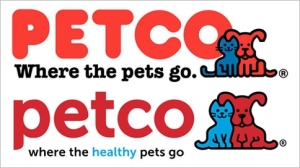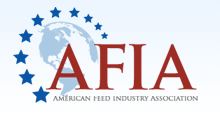What exactly is a brand? According to the American Marketing Association (AMA) a brand is the “name, term, design, symbol, or any other feature that identifies one seller’s good or service as distinct from those of other sellers.” Technically that may describe a brand but it goes much deeper. A brand is a person’s emotional attachment and gut feeling about a product, service, or company. Your brand resides within the hearts and minds of customers, clients, and prospects. It is the sum total of their experiences and perceptions, some of which you can influence, and some that you cannot. Companies may not be able to control this process but they can influence it by communicating the qualities that make their product(s) different than other products. In today’s article we take a look at a few key strategies in how you and your company can help control and influence your brand.
How Do You Control Your Brand in the Pet Care Industry?
As a brand you want to be ‘THE’ leader of a specific product category (i.e. organic dog food). You want your brand to be the first brand that  is visualized by the consumer when a certain word or image appears. Consumers create brands basically for every noun in the English language, whether that be people, places or things. For example, when you hear the word “coffee” for most people they visualize “Starbucks”. Starbucks has become a captivating brand as it is a product for which people believe there’s no substitute. Brand leaders like Starbucks tend to command the highest price premiums and best margins. For some companies they use pricing as their sales strategy. Only one company can be the cheapest – the others have to use branding. The stronger the brand, the greater the profit margin.
is visualized by the consumer when a certain word or image appears. Consumers create brands basically for every noun in the English language, whether that be people, places or things. For example, when you hear the word “coffee” for most people they visualize “Starbucks”. Starbucks has become a captivating brand as it is a product for which people believe there’s no substitute. Brand leaders like Starbucks tend to command the highest price premiums and best margins. For some companies they use pricing as their sales strategy. Only one company can be the cheapest – the others have to use branding. The stronger the brand, the greater the profit margin.
Create A New Product Category
If a company finds it difficult, or nearly impossible, to be the leader in a product or service category they must then re-define or create a new category. For example, the automobile industry is highly competitive. For decades, automobile companies tried to be ‘THE’ brand among consumers shopping for a new vehicle. They have learned over the years that you can’t own the automobile space so many have re-defined their brand identifying new categories within the automobile industry. They each have created a niche. BMW owns ‘driving’, Mercedes-Benz owns ‘prestige’ and Volvo owns ‘safety’. Three of the top four European automobile brands own a word in the mind of the consumer.
A Brand Shift in the Pet Care Industry
Recently, we have witnessed several brand changes within the pet care industry most noticeably the large retail chain stores Petco and PetSmart. In September of 2005, PetsMart announced a slight, but effective, change in their name from PetsMart to PetSmart. On the surface it may seem like a subtle change but the focus of the change was to reposition the PetSmart brand distancing themselves from Wal-Mart, K-Mart and 68 other U.S. ‘Mart’ retailers. The word ‘mart’ has become synonymous with low price, low quality shopping. Since 2005, PetSmart continues to see tremendous growth. Their 2010 4th quarter revenue was $1.52 billion a 7.8% growth from 4th quarter 2009.
 PetSmart’s biggest rival is Petco and on August 17th of this year Petco announced a slight change to their logo and brand. The retail pet food supplier updated its logo by adding the word “healthy” to its tagline. The slogan now reads, “where the healthy pets go”. Elisabeth Charles, Petco Chief Marketing Officer, stated that the change reflects a forward thinking company that is “healthy, active and contemporary”. It was also noted that the new slogan reflects a remodeling process of their stores.
PetSmart’s biggest rival is Petco and on August 17th of this year Petco announced a slight change to their logo and brand. The retail pet food supplier updated its logo by adding the word “healthy” to its tagline. The slogan now reads, “where the healthy pets go”. Elisabeth Charles, Petco Chief Marketing Officer, stated that the change reflects a forward thinking company that is “healthy, active and contemporary”. It was also noted that the new slogan reflects a remodeling process of their stores.
Will the slight change in the slogan and brand improve Petco’s category placement? If not, did they create a new category that evokes a ‘healthy, active and contemporary’ company? To develop a strong brand not only must you be a category leader but it must evoke emotion, innovation, address a problem (i.e. Volvo and safety), differentiation (a unique market position that avoids commoditization), and closes the trust gap between you, the company, and the consumer. We will cover each one of these topics in future blog entries.
You Can Control Your Brand
You must shape, guide and influence people’s perceptions as you control your brand. The tools of branding certainly have changed, but not the general rules. The first step of controlling your brand is to define your category and ask yourself, ‘can we be, or are we currently, the top brand in that category?’ A simple consumer survey will quickly tell you if are a category leader with your brand. Once you establish the right category the next step in a successful brand is to evoke emotion when people hear or see your name. We will cover this topic in our next blog entry.
To receive email notifications on future cheetahLink blog posts sign-up for the email subscription service on the top right of this page.
Is It Time For a Company Re-Brand?
If your pet care company has a tired brand or is in the process of creating a new brand contact cheetahLink today. Founded by Preston Munsch, cheetahLink is a creative brand consulting firm for the pet care industry. Munsch has spent the past 12 years in the pet care and animal health industry specializing in brand development and management through his expertise in product development, marketing, packaging design, market position branding, and market channel strategies. Munsch has a Master’s Degree in Business Administration along with a Bachelor’s Degree in Communication and Associates Degree in Graphic Design. We look forward to helping you rediscovery who your are and what your brand stands for. You have nothing to lose. Feel free to contact us at 720.244.2034 or pmunsch@cheetahlink.com.




